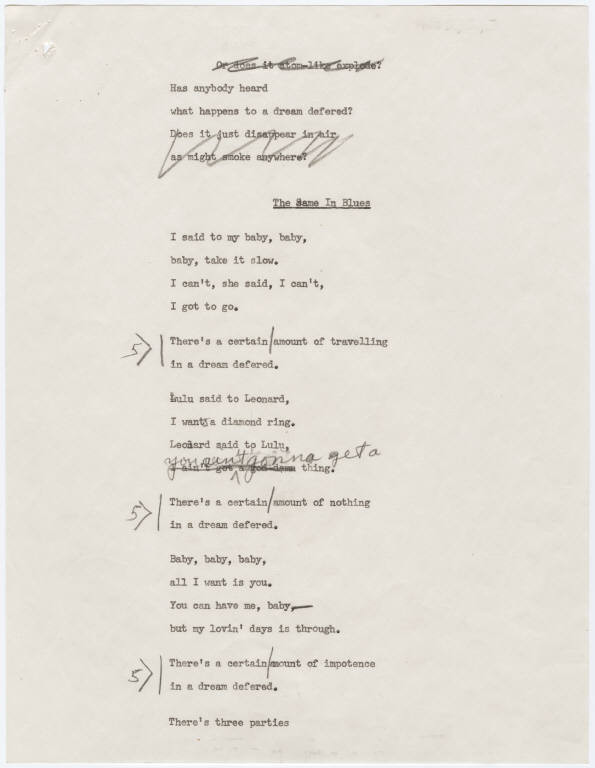'I have questions': Kalamu ya Salaam and Langston Hughes
'Montage of a Dream Deferred'

i have questions. what do you mean by epic. the only “epic” i teach and enjoy teaching is the epic of gilgamesh. i’m not sure what definition you are using for epic. but in my immediate literary heritage and influences, the book length poetry selection that has deeply influenced my own writing and appreciation for literature is langston hughes’ montage of a dream deferred. there is nothing else in what might be considered the epic category that i relate to with any enthusiasm.
--kalamu
Drawing on African American popular music “jazz, ragtime, swing, blues, boogie-woogie and be-bop” (Collected 387) Montage of a Dream Deferred is made up of eighty-seven parts and shows Hughes’s ultimate conception of the poem as epic and as a book-length work. In the epigraph to Montage, Hughes writes, “this poem on contemporary Harlem, like be-bop, is marked by conflicting changes, sudden nuances, sharp and impudent interjections, broken rhythms, and passages sometimes in the matter of the jam session” (Collected 387).
More than half of the Langston Hughes poems in the second edition of the Norton Anthology of African American Literature (2004) are short lyrics from the 1920s — those poems for which Hughes is most well known such as “The Negro Speaks of Rivers” (1921) and “Danse Africaine” (1922). The works of Hughes first published in the 1950s that are included in this Norton anthology (“Juke Box Love Song,” “Dream Boogie,” “Harlem,” and “Motto”) that appear to be short lyrics as well are all actually part of Montage of a Dream Deferred (1951). Yet there is no indication of that, leading readers to believe that Hughes’s poetics had not shifted in thirty years.
Importantly, Hughes’s use of the epic genre in the late 1940s and early 1950s[i] signals that his concern with African American collectivity began to require a longer form. This formal shift also signals his move toward Afro-Modernist experiment. Rampersad notes that Hughes now believed that “the crucial medium of the twentieth century was probably the montage (the composite, swiftly changing picture) or the collage (the inspired arrangement of still fragments)” (Life Vol. II 151), which Hughes found particularly important as he “sought to catch in verse the variety of Harlem life” (Life Vol. II 151-52). During this period Hughes embraces modernist forms while confronting the forces that stall African Americans’ achievement of modernity.
[i] Hughes announced the completion of the book in a letter to Arna Bontemps dated September 14, 1948 (Rampersad, Life Vol. II 151).
--
New Orleans poet Kalamu ya Salaam's Web site is: http://www.kalamu.com/.
Epic worlds